University of Missouri
 | |
| Latin: Universitas Missouriensis | |
Former names | Missouri State University[1] |
|---|---|
| Motto | Salus populi suprema lex esto (Latin) |
Motto in English | "Let the welfare of the people be the supreme law"[2][3][4] |
| Type | Public land-grant research university |
| Established | February 11, 1839[5] |
Parent institution | University of Missouri System |
| Accreditation | HLC |
Academic affiliations | |
| Endowment | $1.75 billion (2019)[6] |
| Budget | $2.2 billion (FY 2016)[5] |
| Chancellor | Mun Choi[7] |
| Provost | Latha Ramchand[8] |
Academic staff | 3,103 (Fall 2018)[9] |
Administrative staff | 13,804 (Fall 2018)[9] |
| Students | 31,401 (Fall 2021)[10] |
| Undergraduates | 22,589 (Fall 2020)[11] |
| Postgraduates | 7,425 (Fall 2020)[11] |
| Location | , , United States 38°56′43″N 92°19′44″W / 38.9453°N 92.3288°W |
| Campus | Midsize city[12], 1,262 acres (511 ha)[5] Total, 19,261 acres (7,795 ha) |
| Newspaper | |
| Colors | Old gold and black[14] |
| Nickname | Tigers |
Sporting affiliations | |
| Mascot | Truman the Tiger |
| Website | www |
 | |
The University of Missouri (Mizzou or MU) is a public land-grant research university in Columbia, Missouri. It is Missouri's largest university and the flagship of the four-campus University of Missouri System. MU was founded in 1839 and was the first public university west of the Mississippi River.[15] It has been a member of the Association of American Universities since 1908 and is classified among "R1: Doctoral Universities – Very high research activity".[16]
Enrolling 31,401 students in 2021, it offers more than 300 degree programs in thirteen major academic divisions.[17][18][19] Its Missouri School of Journalism was founded by Walter Williams in 1908 as the world's first journalism school; it publishes a daily newspaper, the Columbia Missourian, and operates NBC affiliate KOMU.[20][19][21] The University of Missouri Research Reactor Center is the United States’ sole source of isotopes used in nuclear medicine.[22] The university operates University of Missouri Health Care, running a number of hospitals and clinics in Mid-Missouri.
Its NCAA Division I athletic teams are known as the Missouri Tigers, and compete in the Southeastern Conference. The American tradition of homecoming is claimed to have originated at Missouri.[23] University of Missouri alumni, faculty, and staff include 18 Rhodes Scholars,[24] 19 Truman Scholars,[25] 141 Fulbright Scholars,[26] 7 Governors of Missouri,[27] and 6 members of the U.S. Congress.[28] Two alumni and faculty have been awarded the Nobel Prize: alumnus Frederick Chapman Robbins won the Nobel Prize in Physiology or Medicine in 1954[29] and George Smith (chemist) was awarded the Nobel Prize in Chemistry in 2018 while affiliated with the university.[30]
History
Early years
In 1839, the Missouri Legislature passed the Geyer Act to establish funds for a state university.[31] It was the first public university west of the Mississippi River.[32] To secure the university, the citizens of Columbia and Boone County pledged $117,921 in cash and land to beat out five other central Missouri counties for the location of the state university.[32] The land on which the university was constructed was just south of Columbia's downtown and owned by James S. Rollins who was later called the "Father of the University."[33] As the first public university in the Louisiana Purchase, the school was shaped by Thomas Jefferson's ideas about public education.[34] The school initially admitted only white male students.[35]
In 1862, the American Civil War forced the university to close for much of the year.[36] Residents of Columbia formed a Union "home guard" militia that became known as the "Fighting Tigers of Columbia". They were given the name for their readiness to protect the city and university. In 1890, the university's newly formed football team took the name the "Tigers" after the Civil War militia.[37]
In 1870, the institution was granted land-grant college status under the Morrill Act of 1862.[34] The act led to the founding of the Missouri School of Mines and Metallurgy as an offshoot of the main campus in Columbia. It developed as the present-day Missouri University of Science and Technology.[34] In 1888, the Missouri Agricultural Experiment Station opened. This grew to encompass ten centers and research farms around Missouri.[32] By 1890, the university encompassed a normal college (for training of teachers of students through high school), engineering college, arts and science college, school of agriculture and mechanical arts. school of medicine, and school of law.[36]
1892–present
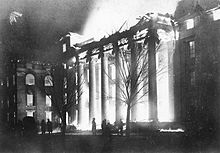
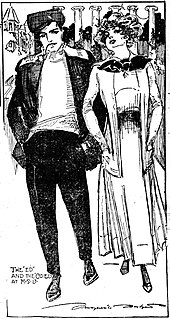
On January 9, 1892, Academic Hall, the institution's central administrative building, burned in a fire that gutted the building, leaving little more standing than six stone Ionic columns.[38] Under the administration of Missouri Governor David R. Francis, the university was rebuilt, with additions that shaped the modern institution.
After the fire, some state residents tried to have the university moved farther west to Sedalia; but Columbia rallied support to keep it. The columns were retained as a symbol of the historic campus. Today they are surrounded by the Francis Quadrangle, the oldest part of campus. At the quad's southern end is Academic Hall's replacement, Jesse Hall, named for Richard Jesse (the president of the university at the time of the fire). Built in 1895, Jesse Hall holds many administrative offices and Jesse Auditorium. The buildings surrounding the quad were constructed of red brick, leading to this area becoming known as Red Campus. The area was tied together in planned landscaping and walks in 1910 by George Kessler in a City Beautiful design of the grounds.[39] Jesse Hall got $9.8 mil. makeover that includes a fire sprinkler system, work on its elevators, and a new heating and cooling system as part of a $92 mil. total renovation package the Curators of the University of Missouri approved in June 2013. This upgrade was completed in May 2015.[40][41]
To the east of the quadrangle, later buildings constructed of white limestone in 1913 and 1914 to accommodate the new academic programs became known as the White Campus. In 1908 the world's first journalism school opened at MU. It became notable for its "Missouri Method" of hands-on, experience-based instruction. It later established an award for "Distinguished Journalism".
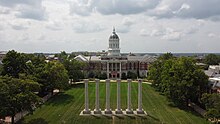
In April 1923, a black janitor was accused of the rape of the daughter of a University of Missouri professor. James T. Scott was abducted from the Boone County Jail by a lynch mob of townsfolk and students, and was hanged from a bridge near the campus.[42]
In the winter of 1935, four graduates of Lincoln University—a traditionally black school about 30 miles (48 km) away in Jefferson City—were denied admission to MU's graduate school. One of the students, Lloyd L. Gaines, brought his case to the United States Supreme Court. On December 12, 1938, in a landmark 6–2 decision, the court ordered the State of Missouri to admit Gaines to MU's law school or provide a facility of equal stature. Gaines disappeared in Chicago on March 19, 1939, under suspicious circumstances. The university granted Gaines a posthumous honorary law degree in May 2006.[43] Undergraduate divisions were integrated by court order in 1950, when the university was compelled to admit African Americans to courses that were not offered at Lincoln University.
On June 5, 1935, the university erected a memorial to the Confederate soldiers of Missouri; it was popularly known as Confederate Rock. The monument was removed in 1974.[44]
After World War II, the enrollment at universities around the country grew at an extraordinary pace, and MU was no exception. This was due in part to the G.I. Bill, which allowed veterans to attend college with the assistance of the federal government.
Following the 2015–16 University of Missouri protests, the chancellor and system president resigned amid racial complaints by students.[45]
Due to the emerging COVID-19 Pandemic, the university cancelled classes on March 11, 2020. It was soon announced that the remainder of classes that semester were to be remotely taught. On campus classes resumed that August.[46][47]
Campus
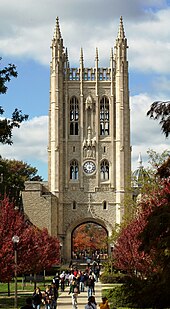
The campus of the University of Missouri is 1,262-acre (2.0 sq mi; 510.7 ha)[5] just south of Downtown Columbia and is maintained as a botanical garden. The historical campus is centered on Francis Quadrangle, a historic district listed on the National Register of Historic Places, and contains a number of buildings on the National Register of Historic Places.
The academic buildings are classified into two main groups: Red Campus and White Campus. Red Campus is the historic core of mostly brick academic buildings around the landmark columns of the Francis Quadrangle; it includes Jesse Hall and Switzler Hall. In the early 20th century, the College of Agriculture began a period of rapid expansion in which several buildings were constructed to accommodate the growing program and student body. The new buildings, constructed in Neo-Gothic style from native Missouri limestone, form the White Campus. Its most notable building is Memorial Union.
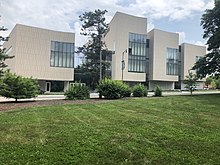
During the 1990s, Red Campus was extended to the south with the creation of the Carnahan Quadrangle. Hulston Hall of the University of Missouri School of Law, completed in 1988, formed the eastern border of the future quad. The Reynolds Alumni Center was completed in 1992 on the west side of the new quad. It was completed in 2002 with Cornell Hall of the Trulaske College of Business and Tiger Plaza. Plans for a new plaza on the north end of the Carnahan Quadrangle were unveiled in 2014. Called Traditions Plaza, it was opened on October 25, 2014, during homecoming festivities.[48]
While the original MU intercollegiate athletic facilities, such as Rollins Field and Rothwell Gymnasium, were just south of the academic buildings, later expanded facilities were constructed across Stadium Boulevard, where Memorial Stadium opened in 1926. The Hearnes Center was built to the east of the stadium in 1972. In 1994, the university developed the first draft of a master plan for the campus to tie together all of Tiger athletic facilities to the south of Stadium Boulevard and add to its design. Today, the MU Sports Park includes the Mizzou Arena, Taylor Stadium, Walton Stadium, Mizzou Athletics Training Complex, University Field and Devine Pavilion. Student athletic facilities remain in the core area of campus. Rothwell Gymnasium and Brewer Fieldhouse are part of the 283,579-square-foot (26,345.4 m2) Student Recreation Center, which was ranked number one in the nation in 2005 by Sports Illustrated.[49][50]
The main campus of the University of Missouri Hospitals and Clinics is north of the sports complex. It includes the University of Missouri Hospital and Truman Memorial Veterans Hospital. Two of the hospitals, Columbia Regional Hospital and Ellis Fischel Cancer Center, are northeast of the main campus near I-70.
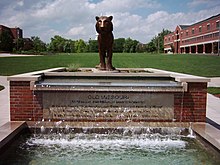
To the south of the MU Sports Park is the MU Research Park. It includes the University of Missouri Research Reactor Center, International Institute for Nano and Molecular Medicine, MU Life Science Business Incubator at Monsanto Place, and Dalton Cardiovascular Research Center. In 2005, the University of Missouri Board of Curators approved legislation to designate the South Farm of the College of Agriculture, Food and Natural Resources (CAFNR) as a research park. The 114-acre (46.1 ha) park, three miles (4.8 km) southeast of the main campus on US63, is now known as Discovery Ridge Research Park. Tenants at Discovery Ridge include ABC Laboratories and the MU Research Animal Diagnostic Laboratory.
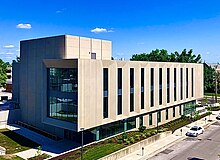
The main campus is flanked to the east and west by Greek Life housing. The University of Missouri has nearly 50 national social fraternities and sororities, many of which occupy historical residences now valued in the millions of dollars. Beta Sigma Psi, Kappa Alpha Order, Sigma Chi, Beta Theta Pi (Originally Zeta Phi), Alpha Gamma Rho, Tau Kappa Epsilon and Sigma Nu form a Greek Row (also called Frat Row) along College Avenue in the East Campus area. Delta Tau Delta, Kappa Sigma, Lambda Chi Alpha, and Sigma Alpha Epsilon are in the West Campus area along Stewart Street, which leads directly into the Francis Quadrangle. Most of the Greek-letter organizations are in a Greek Town, with approximately 30 Greek residences, to the north of Memorial Stadium.
The main campus, along with all other MU-owned or operated facilities, is protected by the University of Missouri Police Department, which is in the Virginia Avenue parking garage on the main campus. In 2019 a new Center for Missouri Studies was opened as a new headquarters for the State Historical Society of Missouri. It contains a vastly expanded gallery/collection display area, a library/reading room, classrooms, offices, open and closed stacks, microfilm rooms, art restoration lab, a large event room, and a gift shop. In 2020 a new home for the School of Music was finished, the Sinquefield Music Center. The building houses faculty offices, classrooms, two large ensemble rehearsal spaces, a recording studio, many small rehearsal rooms. As of 2020 the NextGen Precision Health Institute was under construction on the University of Missouri Health campus. This five-story 265,000 square-foot building will provide state-of-the-art medical research space.[51]
Academics and rankings
| Academic rankings | |
|---|---|
| National | |
| ARWU[52] | 62-82 |
| Forbes[53] | 113 |
| THE / WSJ[54] | 180 |
| U.S. News & World Report[55] | 121 |
| Washington Monthly[56] | 46 |
| Global | |
| ARWU[57] | 201-300 |
| QS[58] | 476 |
| THE[59] | 401-500 |
| U.S. News & World Report[60] | 374 |
MU is the largest public university in Missouri. Of those applying for freshman admission, 78.1% are admitted with those matriculating having an average GPA of 3.6, an average SAT composite score of 1232 out of a maximum of 1600, and an average ACT composite score of 26 out of a maximum of 36.[61]
MU is a member of the Association of American Universities and classified among "R1: Doctoral Universities – Very high research activity".[62] In what is now a decade-long trend, the university saw a further increase in its research and development expenditures to $432 million as of 2022.[63] MU is also one of two land-grant universities in the state, along with Lincoln University.
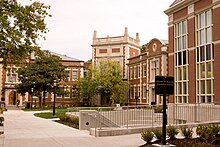
In 1908, the Missouri School of Journalism (colloquially the "J-school") was founded in Columbia; it claims to be the first of its kind in the world although the French had first established their Ecole Supérieure de Journalisme de Paris in 1899.[64]
The UM System owns and operates KOMU-TV, the NBC/CW affiliate for Columbia and nearby Jefferson City. It is a full-fledged commercial station and a working lab for journalism students. The MU School of Journalism publishes the Columbia Missourian and Vox Magazine,[65] where students learn reporting, editing and design in a newsroom managed by professional editors. It operates the local National Public Radio Station KBIA and produces Radio Adelante, a Spanish-language radio program.
Founded in 1978 after 23 years as a unit of the School of Medicine, the School of Health Professions became an autonomous division in December 2000. The school's five departments and eight accredited academic programs have a long history, some dating to the early 20th century. It is Missouri's only state-supported school of health professions on a campus with an academic health center, and the only allied health school in the UM system.[66]
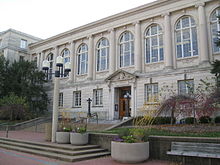
The university maintains the largest library collection in the State of Missouri. As of the 2011–12 academic year, the collection held 3.1 million volumes, 8.1 million microforms, 678,596 e-books, almost 1.7 million government documents, more than 284,000 print maps, and more than 53,000 journal subscriptions.[5][67] The collection is housed in Ellis Library, the University Archives, and seven other specialized academic libraries across campus.[5][68] Most of the original collection, housed in Academic Hall, was lost in the 1892 fire.
During the American Civil War, Union troops used the Library in Academic Hall as a guard room. The Union troops caused significant damage, including taking 467 volumes to build fires. The board of curators later sued the US Army for the destruction on campus. Settled in 1915, the suit's award was used to build the Memorial Gateway on the northern edge of Red Campus.[69]
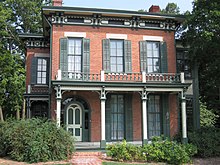
In 1913, construction began on a new main library, completed in 1915. It was expanded in 1935, 1958, and 1985. It was dedicated as Elmer Ellis Library on October 10, 1972, in honor of the thirteenth president of the University of Missouri. Today, the MU libraries are home to the 47th largest research collection in North America.[70]
The Jeffrey E. Smith Institute of Real Estate was founded in 2005 by a donation from alumnus Jeffrey Smith to meet the growing interest of students in the College of Business, seeking to learn more about the real estate industry.
MU merged two departments, the Center for Distance and Independent Study and MU Direct: Continuing and Distance Education, to form Mizzou Online in 2011.[71][72] Mizzou Online offers online courses for 18 of the university's colleges[71] and operates the University of Missouri High School, a distance learning K-12 high school.[73]
As of March 2012[update], the University of Missouri Research Reactor Center is the highest power university research reactor in the U.S. at 10 megawatt (10 million watts) thermal output.
Organization and administration
| College/school founding[74] | |
|---|---|
| College/school | Year founded |
|
| |
| College of Arts and Science | 1841 |
| College of Education | 1868[75] |
| College of Agriculture, Food and Natural Resources | 1870[76] |
| School of Law | 1872 |
| School of Medicine | 1872 |
| College of Engineering | 1877 |
| Graduate School | 1896 |
| School of Journalism | 1908 |
| Trulaske College of Business | 1914 |
| School of Music | 1917 |
| Sinclair School of Nursing | 1920 |
| College of Veterinary Medicine | 1946 |
| School of Social Work | 1948 |
| Honors College | 1958 |
| College of Human Environmental Sciences | 1960 |
| School of Accountancy | 1975 |
| School of Natural Resources | 1989[77] |
| School of Information Science & Learning Technologies | 1997[78] |
| College of Health Sciences | 2000 |
| Truman School of Public Affairs | 2001[79] |
| School of Visual Studies | 2018 |
The University of Missouri is organized into seven colleges, eleven schools and hosts approximately 300 majors.
Name
Upon creation of the system, each university was renamed with its host city; thus, the university in Columbia became the University of Missouri–Columbia. In the proceeding decades, colloquial and verbal usage of the generic name in reference to MU continued. There were attempts to drop Columbia from its name by students, faculty, alumni, and administrators who felt it might cause the university to be perceived as a regional institution. This change was long resisted by the UM System and the other universities on the basis of uniformity and fairness. However, after a renewed effort for "name restoration", the board of curators voted unanimously on November 29, 2007, to allow MU to drop Columbia from its name for all public use.[80] Continued use of the name University of Missouri–Columbia is not incorrect but is being phased out by MU, except as required on official internal documents within the UM System. Its use also continues to be advocated by some faculty, administration, and alumni of UMKC, UMSL, and Missouri S&T.[81][82]
Presidents and chancellors
Each campus of the University of Missouri System is led by a chancellor, who reports to the president of the UM System.[83][84]
Presidents, 1841–63 and Chancellors, 1963–present
- John Hiram Lathrop (1841–49)
- James Shannon (1850–56)
- William Wilson Hudson (1856–59)
- Benjamin Blake Minor (1860–62)
- John Hiram Lathrop (1865–66)
- Daniel Read (1866–76)
- Samuel Spahr Laws (1876–89)
- Richard Henry Jesse (1891–1908)
- Albert Ross Hill (1908–21)
- John Carleton Jones (1922–23)
- Stratton Brooks (1923–30)
- Walter Williams (1931–35)
- Frederick Middlebush (1935–54)
- Elmer Ellis† (1955–63)
- John W. Schwada (1964–70)
- Herbert W. Schooling (1971–78)
- Barbara Uehling (1978–87)
- Haskell Monroe (1987–93)
- Charles Kiesler (1993–96)
- Richard L. Wallace (1997–2004)
- Brady J. Deaton (2004–13)[85]
- R. Bowen Loftin (2014–2015)[86]
- Alexander Cartwright[87] (2017–2020)[88][89][90]
- Mun Choi†† (2020–present)[91]
† Ellis became president of the University of Missouri System upon its creation, serving until 1966.
†† Choi is the first Chancellor to simultaneously be President of the University of Missouri System
Student life
| Race and ethnicity[92] | Total | ||
|---|---|---|---|
| White | 78% | ||
| Black | 7% | ||
| Hispanic | 5% | ||
| Other[a] | 5% | ||
| Asian | 3% | ||
| Foreign national | 1% | ||
| Economic diversity | |||
| Low-income[b] | 25% | ||
| Affluent[c] | 75% | ||
Residential life
The University of Missouri operates 23 on-campus residence halls and least two other off-campus sites. The two off-campus locations include: Tiger Diggs at Campus View Apartments and True Scholars House. Many residence halls on campus offer learning communities and freshman interest groups. Both programs seek to ensure students succeed academically while living in the residence halls.
Three of the older halls: Jones, Lathrop, and Laws are scheduled to be torn down and replaced as the largest and first part ($71 million) of a $92 million campus improvement project approved by the Board of Curators on June 13, 2013. The plan also includes replacing the dining hall north of Faurot Field. The three halls presently can house up to 1,010 students. The new halls will expand the capacity to 1,242 by the time the first part is completed in May 2017. The renovation of Swallow Hall (1893) is also part of the plan, costing $11.5 million of the total.[40]
Two residence halls, Excellence and Respect will be on standby starting in the Fall 2016 semester, and only used if necessary because Fall enrollment is expected to drop by 1,500 students, which it did by 2,273 including 1,412 fewer freshmen.[93] The 319 beds will be used over the summer until August 4, 2016. Both halls will undergo repairs if not needed. The new George C. Brooks Hall will open as planned for the Fall 2016 semester and house 293 students.[94]
Three more residence halls will temporarily close in the Fall of 2017: Center, Responsibility, and Discovery. Previously it was announced Respect, Excellence, Schurz and McDavid wouldn't operate in the Fall unless there was sufficient demand to reopen some of them. Combined, the seven halls are capable of housing about 1,500 students. The closures are estimated to save about $2 million, largely through reduced utility costs. The university says two of the closed halls also could get some use as guest and conference housing. The temporary closures come after freshman enrollment dropped 24 percent for this academic year.[95] The declining enrollment precipitated a budget plan to cut 400 jobs, but most of them are from those resigning or retiring, so less than 100 actual jobs will be eliminated for the 2018 fiscal year.[96]